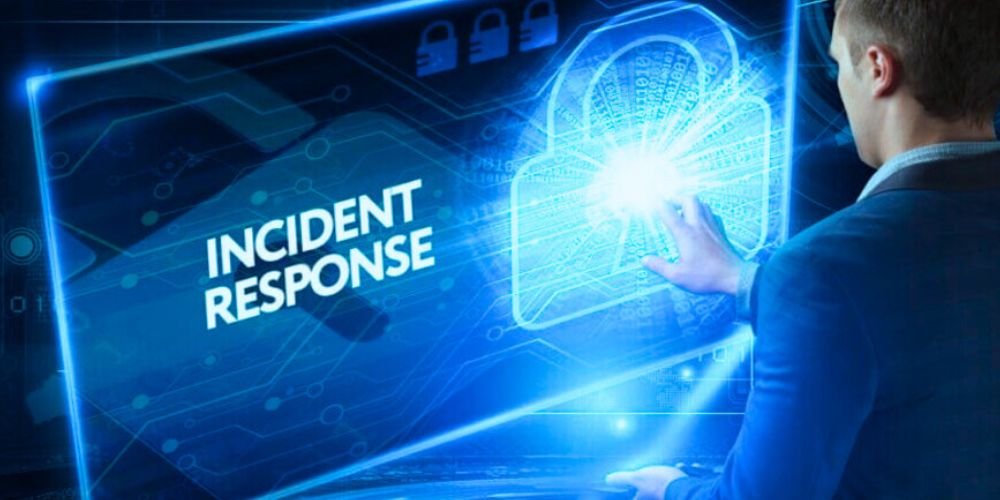In the interconnected digital landscape, where cyber threats loom large, incident response has become crucial to organizations’ cybersecurity strategies. This article explores the significance of incident response, its key elements, the evolving threat landscape, and strategies organizations employ to mitigate and recover from cybersecurity incidents effectively.
Significance of Incident Response
Incident response is paramount in minimizing the impact of cybersecurity incidents and ensuring the swift recovery of affected systems. Several key factors underscore the significance of incident response:
Minimizing Downtime and Financial Losses
Effective incident response minimizes downtime and financial losses associated with cyber incidents. Swift identification, containment, and eradication of threats contribute to reducing the operational impact and associated costs.
Protecting Sensitive Data
Cybersecurity incidents often involve the compromise of sensitive data. Incident response measures focus on protecting this data, ensuring that unauthorized access is halted, and securing affected information to prevent further exploitation.
Preserving Reputational Integrity
A timely and well-executed incident response plan helps preserve an organization’s reputational integrity. Public perception and trust can be restored by demonstrating a proactive and transparent response to cybersecurity incidents.
Legal and Regulatory Compliance
Adherence to legal and regulatory requirements is a crucial aspect of incident response. Organizations must navigate compliance obligations and reporting mandates, demonstrating a commitment to ethical and lawful cybersecurity practices.
Key Elements of Incident Response
Effective incident response involves a structured approach that encompasses key elements to address and mitigate cybersecurity incidents:
Preparation
Preparation is the foundation of incident response. It involves creating and regularly updating an incident response plan that outlines roles, responsibilities, communication protocols, and steps to be taken in the event of a cybersecurity incident. Regular training and drills ensure readiness.
Identification
The identification phase involves detecting and confirming the occurrence of a cybersecurity incident. It may include monitoring security alerts, analyzing logs, and leveraging threat intelligence to identify abnormal activities that may indicate a security breach.
Containment
Once an incident is identified, containment measures are implemented to prevent further damage. It involves isolating affected systems, closing vulnerabilities, and implementing temporary fixes to halt the progression of the incident.
Eradication
Eradication focuses on completely removing the threat from the affected systems. It involves identifying the incident’s root cause, eliminating malware or unauthorized access points, and implementing permanent fixes to prevent a recurrence.
Recovery
Recovery efforts aim to restore affected systems and operations to normalcy. This includes restoring data from backups, validating system integrity, and implementing improvements to prevent similar incidents in the future.
Lessons Learned (Post-Incident Analysis)
After an incident is resolved, a post-incident analysis is conducted to assess the effectiveness of the response and identify areas for improvement. Lessons learned from each incident contribute to refining and enhancing the incident response plan.
The Evolving Threat Landscape
The threat landscape continually evolves, presenting new challenges for incident response teams. Some notable trends in the evolving threat landscape include:
Advanced Persistent Threats (APTs)
APTs are sophisticated and targeted cyberattacks often orchestrated by well-funded threat actors. Incident response strategies must evolve to detect and respond to APTs, which can remain undetected for extended periods.
Ransomware
Ransomware attacks have surged in recent years, targeting organizations of all sizes. Incident response plans must include strategies for ransomware, including data backups, decryption tools, and communication with attackers.
Cloud Security Concerns
As organizations increasingly adopt cloud services, incident response strategies must address the unique challenges of securing cloud environments. These strategies include rapid detection of unauthorized access, data exposure, and misconfigurations.
Supply Chain Attacks
Incident response plans must consider the impact of supply chain attacks, where threat actors target vulnerabilities in third-party vendors to compromise the primary target. Vigilance in vetting and monitoring third-party relationships is crucial.
Strategies for Effective Incident Response
Organizations employ various strategies to enhance the effectiveness of their incident response capabilities:
Threat Intelligence Integration
Integrating threat intelligence into incident response processes provides organizations real-time information about emerging threats. It enables proactive identification and response to potential incidents before they escalate.
Automation and Orchestration
Automating repetitive tasks and orchestrating incident response workflows can significantly reduce response times. Automation allows for rapid data collection, analysis, and decision-making, enabling faster containment and eradication of threats.
Collaboration and Communication
Effective incident response requires seamless collaboration and communication among internal teams, external partners, and stakeholders. Clear lines of communication ensure that everyone involved in the response is informed and coordinated.
Continuous Training and Skill Development
Cybersecurity professionals involved in incident response must undergo continuous training to stay abreast of evolving threats and technologies. Regular drills and simulations help teams practice and refine their incident response procedures.
Conclusion
Incident response is critical to modern cybersecurity, allowing organizations to mitigate and recover from cybersecurity incidents effectively. As the threat landscape evolves, incident response strategies must adapt to address new challenges and emerging attack vectors. By prioritizing preparation, embracing a comprehensive incident response plan, and staying vigilant in the face of evolving threats, organizations can safeguard their digital resilience and protect against the potential impact of cyber threats. In a world where cyber threats are a constant reality, a well-executed incident response plan remains a cornerstone of cybersecurity resilience.










